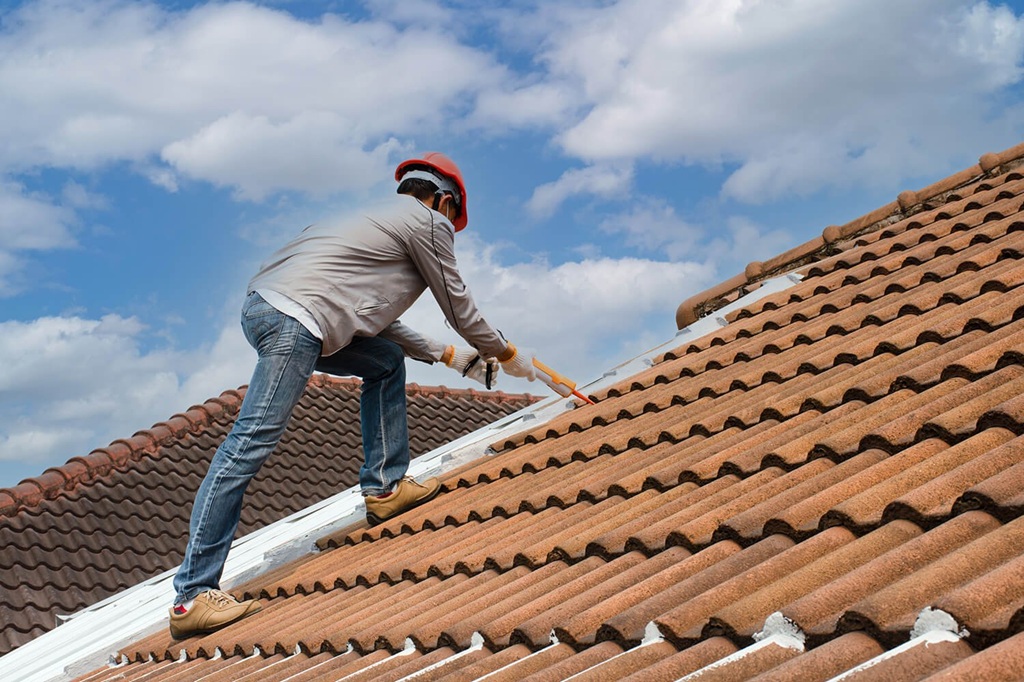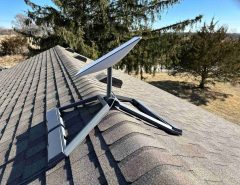A sagging roof, a visually alarming and structurally concerning issue, is a silent cry for help from your home’s protective shield. It’s not just an aesthetic blemish; it’s a symptom of underlying problems that, if left unchecked, can lead to significant damage and costly repairs. Understanding the reasons behind roof sagging and exploring the available repair options is crucial for homeowners to maintain the integrity and longevity of their dwellings. This comprehensive article delves into the intricacies of sagging roofs, providing detailed insights and practical solutions while addressing frequently asked questions to empower you with the knowledge needed to take proactive measures.
The Anatomy of a Sagging Roof: Identifying the Culprits
A roof doesn’t simply decide to sag overnight. It’s a gradual process, often triggered by a combination of factors. To effectively address the issue, we must first pinpoint the root causes. Here’s a breakdown of the common culprits:
- Structural Deficiencies: The framework of your roof, comprising rafters, trusses, and beams, is designed to bear the weight of the roofing materials and environmental loads like snow and wind. Over time, or due to initial construction flaws, these structural components can weaken, leading to sagging. Improperly sized or spaced rafters, inadequate bracing, or the use of substandard lumber can all contribute to this issue. Imagine a bridge built with too few supports; it will inevitably buckle under pressure. Similarly, a roof with insufficient structural support will succumb to the forces acting upon it.
- Water Damage: Water is the archenemy of any building material, especially wood. Leaks, whether from damaged shingles, flashing, or valleys, can penetrate the roof structure, causing rot and decay. This weakens the wood, making it susceptible to sagging. The insidious nature of water damage is that it often goes unnoticed for extended periods. A small leak might initially cause minimal damage, but over time, it can compromise the entire roof structure. Think of a damp sponge; it loses its rigidity and shape, much like water-damaged wood.
- Excessive Weight Load: Accumulations of snow, heavy debris, or even improperly installed heavy roofing materials can overload the roof structure. This is particularly problematic in regions with heavy snowfall. The added weight puts excessive stress on the rafters and trusses, leading to bending and sagging. The concept is simple: exceeding the weight capacity of any structure will lead to failure. Imagine piling too many books on a shelf; it will eventually bow or collapse.
- Foundation Issues: Surprisingly, foundation problems can manifest as roof sagging. If the foundation settles unevenly, it can cause the walls to shift, which in turn puts stress on the roof structure. This can lead to warping and sagging. A home is a unified system, and issues in one area can have cascading effects throughout the entire structure.
- Age and Natural Deterioration: Like any other component of your home, the roof ages and deteriorates over time. Wood can weaken, nails can loosen, and sealants can crack. This natural wear and tear can contribute to sagging, especially in older homes. The effects of time are inevitable; even the strongest materials will eventually succumb to the elements.
- Improper Ventilation: Poor attic ventilation can lead to excessive heat and moisture buildup, which can damage the roof structure. This can cause warping, rotting, and ultimately, sagging. Ventilation is the lungs of your attic; without proper airflow, moisture gets trapped and causes harm.
Related: Positive Impact, Positive Roof: Crafting Eco-Friendly Roofs with Recycled Materials
Navigating the Repair Options: A Step-by-Step Guide

Addressing a sagging roof requires a thorough assessment by a qualified roofing professional. The appropriate repair strategy will depend on the severity of the damage and the underlying cause. Here are some common repair options:
- Reinforcing the Existing Structure: For minor sagging caused by structural deficiencies, reinforcing the existing rafters or trusses may be sufficient. This can involve adding sister rafters or trusses alongside the existing ones to provide additional support. This is akin to adding extra beams to a bridge to strengthen it.
- Replacing Damaged Components: If the sagging is due to water damage or rot, the affected rafters, trusses, or sheathing will need to be replaced. This involves carefully removing the damaged sections and installing new, treated lumber. This is a surgical approach, targeting the specific areas of weakness.
- Addressing Foundation Issues: If the sagging is related to foundation problems, these issues must be addressed first. This may involve underpinning, leveling, or other foundation repair techniques. Correcting the foundation is the essential first step before any roof repairs are attempted.
- Installing Additional Supports: In cases of excessive weight load, additional supports may be needed to distribute the weight more evenly. This can involve adding posts, beams, or other structural elements. This is like adding extra columns to a building to handle a heavier load.
- Re-roofing and Sheathing Replacement: In severe cases, a complete re-roofing and sheathing replacement may be necessary. This involves removing the existing roofing materials and sheathing, inspecting the underlying structure, and replacing any damaged components. This is a comprehensive overhaul, ensuring the entire roof system is sound.
- Improving Ventilation: Addressing ventilation issues involves installing or upgrading attic vents, ridge vents, or soffit vents. This will help to regulate temperature and moisture levels, preventing further damage. This is like opening windows to allow fresh air to circulate.
Related: Roofing for a Greener Future: Maximizing Sustainability with Recycled Content
People Also Ask: Addressing Your Burning Questions
- How much does it cost to repair a sagging roof?
- The cost varies depending on the extent of the damage, the type of repairs needed, and the location of your home. Minor repairs may cost a few hundred dollars, while major repairs or a complete re-roofing can cost several thousand. It’s best to obtain multiple quotes from reputable roofing contractors.
- Can I repair a sagging roof myself?
- While minor repairs like replacing a few shingles may be DIY-friendly, structural repairs should always be handled by a qualified professional. Improper repairs can exacerbate the problem and create safety hazards.
- How can I prevent my roof from sagging?
- Regular roof inspections, proper attic ventilation, prompt leak repairs, and ensuring adequate structural support are crucial for preventing sagging. Clearing snow and debris from the roof is also important.
- What are the signs of a sagging roof?
- Visible dips or sags in the roofline, cracks in the ceiling or walls, water stains, and uneven roof surfaces are all signs of a sagging roof.
- Does homeowners insurance cover sagging roof repairs?
- Homeowners insurance typically covers damage caused by sudden and unexpected events, such as storms or falling trees. However, it may not cover damage caused by gradual deterioration or lack of maintenance. Review your policy for specific coverage details.
- How often should I have my roof inspected?
- It is best to have your roof inspected at least twice a year, once in the spring and once in the fall. After severe weather events, it is also a good idea to have your roof inspected.
Conclusion: Safeguarding Your Home’s Crown
A sagging roof is a serious issue that demands prompt attention. By understanding the underlying causes and exploring the available repair options, homeowners can take proactive steps to protect their investments and ensure the safety and longevity of their homes. Regular inspections, prompt repairs, and proper maintenance are essential for preventing roof sagging and maintaining a sound and secure dwelling. Remember, your roof is your home’s first line of defense against the elements. Addressing any signs of sagging early on can save you significant time, money, and stress in the long run. If you suspect your roof is sagging, don’t hesitate to contact a qualified roofing professional for a thorough inspection and expert advice. Your home deserves the best protection, and a healthy, strong roof is the foundation of that protection.




